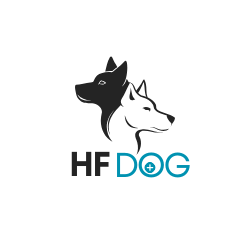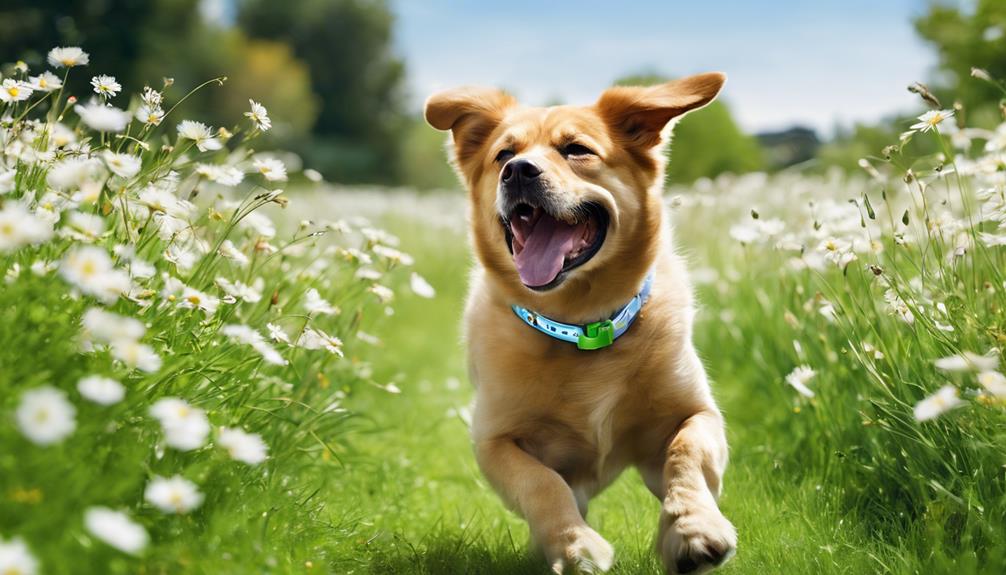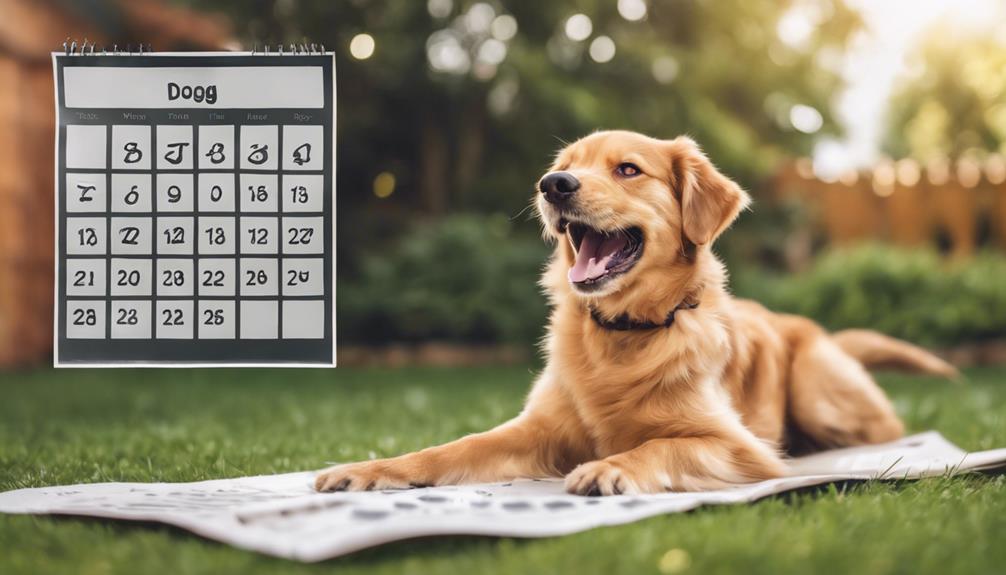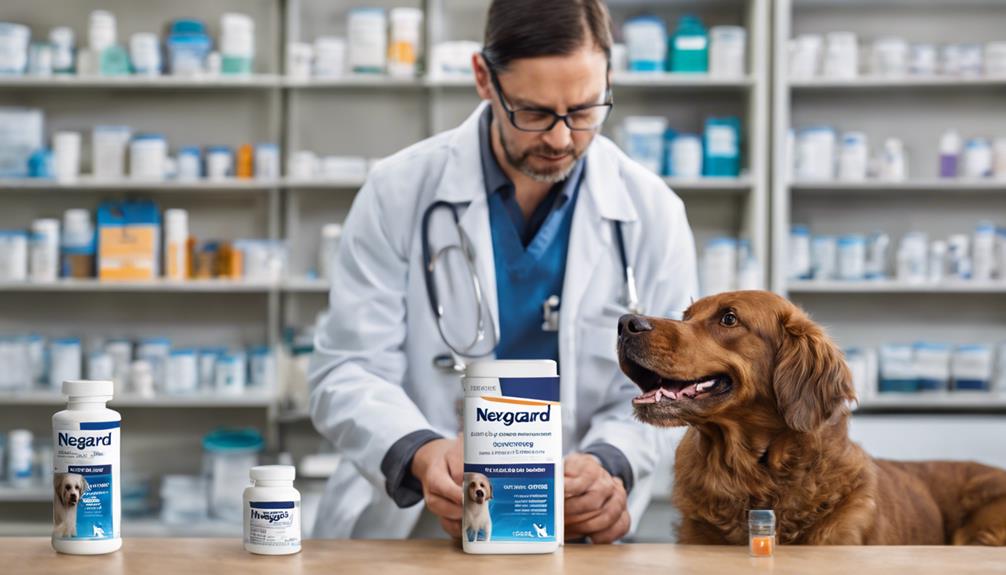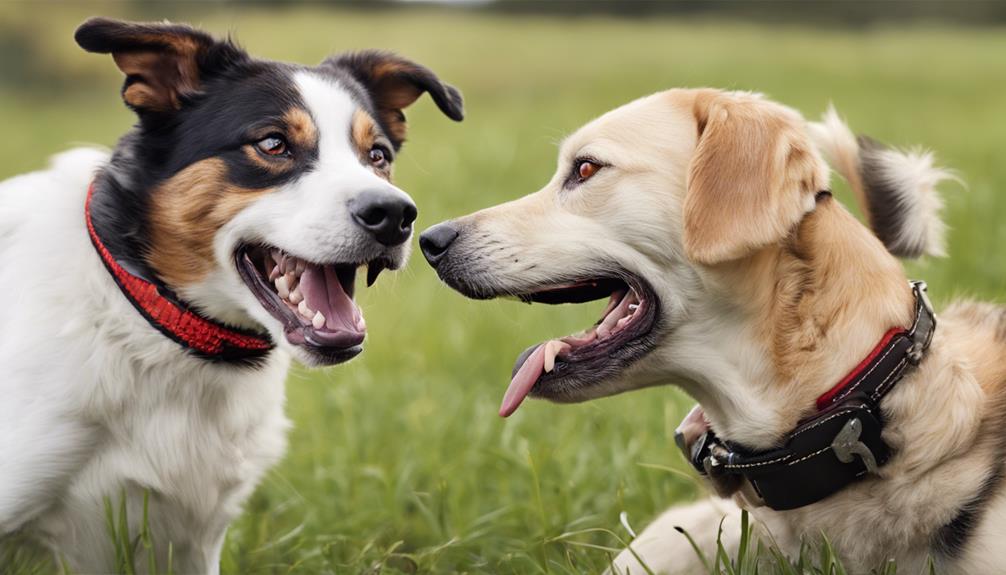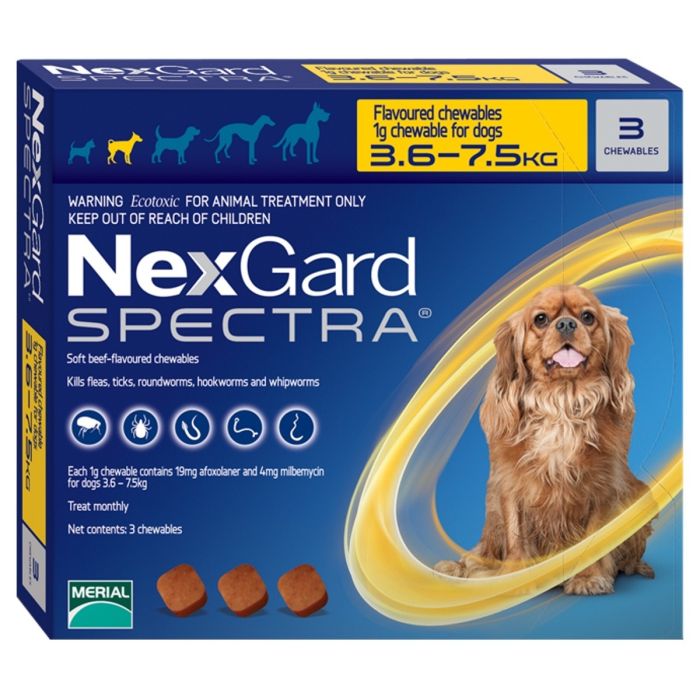Using NexGard Safely for Dogs
When it comes to using NexGard safely for your furry companion, there are essential considerations to keep in mind. Ensuring the correct dosage, monitoring for any adverse reactions, and understanding potential side effects are just the beginning. But did you know there are additional factors that play a crucial role in safeguarding your dog’s health when using this popular flea and tick treatment? Stay tuned to discover some lesser-known tips and insights that will help you navigate the world of NexGard administration with confidence and care.
Key Takeaways
- Follow correct dosage based on dog’s weight for safety and effectiveness.
- Watch for common side effects like vomiting, diarrhea, and lethargy.
- Monitor for any allergic reactions post-administration.
- Inform vet about other medications to avoid interactions.
- Administer with food and store securely away from children.
Safety Precautions for NexGard
When administering NexGard to your dog, always follow safety precautions to ensure their well-being and health. Before giving NexGard to your furry friend, carefully read the instructions on the package. It’s crucial to provide the correct dosage based on your dog’s weight. Never give NexGard meant for larger dogs to smaller breeds, as this can lead to overdosing.
Ensure your dog consumes the tablet entirely and monitor them for a few minutes after administration to prevent any regurgitation. Store NexGard in a safe place away from children and pets, as it’s for canine use only. Keep an eye out for any allergic reactions after giving NexGard, such as itching, redness, or swelling. If you notice any unusual symptoms, contact your veterinarian immediately.
Remember to schedule regular check-ups with your vet to monitor your dog’s health and discuss any concerns regarding NexGard. By following these safety precautions, you can help protect your dog from fleas and ticks while keeping them safe and healthy.
Dosage Guidelines for Dogs
To ensure the safe and effective use of NexGard for your dog, carefully follow the recommended dosage guidelines based on their weight. NexGard comes in different strengths suitable for various weight ranges. It’s crucial to administer the correct dosage to prevent under or overdosing. The dosage is determined by your dog’s weight, so it’s essential to weigh your dog accurately before giving them NexGard.
For dogs weighing between 4-10 pounds, the recommended dosage is one chewable tablet of 11.3 mg strength. Dogs weighing between 10.1-24 pounds should be given the 28.3 mg strength tablet. Dogs weighing between 24.1-60 pounds require the 68 mg strength tablet, while dogs weighing between 60.1-121 pounds should be given the 136 mg strength tablet.
It’s vital to strictly adhere to these guidelines to ensure the safety and effectiveness of NexGard. If you have any doubts about the correct dosage for your dog, consult your veterinarian for guidance.
Potential Side Effects to Watch For
Watch for any potential side effects that may occur when using NexGard for your dog. While NexGard is generally well-tolerated, some dogs may experience side effects. The most commonly reported side effects include vomiting, diarrhea, lethargy, and lack of appetite.
In some cases, dogs may also exhibit symptoms such as itching, redness, or rash on the skin. If your dog shows any signs of discomfort or unusual behavior after taking NexGard, it’s essential to contact your veterinarian immediately. Severe side effects are rare but can include tremors, seizures, or difficulty walking.
Monitoring your dog closely after administering NexGard can help you catch any potential side effects early on. Remember to follow the recommended dosage based on your dog’s weight and consult your vet if you have any concerns about your dog’s reaction to NexGard. By staying vigilant and informed, you can help ensure your dog’s safety while using NexGard for flea and tick prevention.
Interactions With Other Medications
It’s important to be cautious about potential interactions with other medications when using NexGard for your dog. Before starting NexGard, inform your veterinarian about any other medications or supplements your dog is taking. Certain drugs may interact with NexGard, affecting its effectiveness or causing unwanted side effects.
Specifically, NexGard may interact with medications that affect the liver, such as antifungal drugs, antibiotics, or antiseizure medications. These medications can impact the way NexGard is metabolized in your dog’s body, potentially leading to issues. Additionally, NexGard might interact with certain flea and tick preventatives or treatments. Combining NexGard with these products could result in an overdose of certain ingredients, so it’s essential to consult with your vet before using them together.
To ensure your dog’s safety and the effectiveness of NexGard, always follow your veterinarian’s advice regarding medication interactions. Be vigilant for any signs of adverse reactions when introducing new medications alongside NexGard, and promptly seek veterinary assistance if you notice any concerning symptoms.
Tips for Administering NexGard
When administering NexGard to your dog, ensure you follow these practical tips for a smooth and effective application.
First, give NexGard with a meal or within 30 minutes of feeding to maximize absorption and minimize the risk of stomach upset. Most dogs find the chewable tablet palatable, but if your furry friend is hesitant, try hiding it in their food or a tasty treat. Remember to give the full dosage based on your dog’s weight, as under-dosing can reduce effectiveness.
It’s crucial to monitor your dog after administration to ensure they’ve swallowed the entire tablet. If by any chance you observe any adverse reactions like vomiting or lethargy, contact your veterinarian promptly.
Additionally, store NexGard in a cool, dry place away from children’s reach to maintain its efficacy. By following these simple tips, you can ensure that your dog receives the full benefits of NexGard without any hiccups.
Frequently Asked Questions
Can Nexgard Be Used for Pregnant or Nursing Dogs?
During pregnancy or nursing, consult your vet before giving NexGard to your dog. Ensure the safety of both the mother and her puppies. It’s crucial to prioritize their health and well-being above all else.
Is It Safe to Give Nexgard to Puppies Under 8 Weeks?
Yes, it’s not safe to give NexGard to puppies under 8 weeks. Their young bodies may react adversely to the medication. Consult your vet for suitable alternatives to ensure your puppy’s health and safety.
How Long Does Nexgard Take to Start Working?
Once administered, NexGard typically starts working within 4 hours. It’s fast-acting to tackle those pesky fleas and ticks quickly. Keep an eye out for any signs of irritation and contact your vet if concerned.
Can Nexgard Be Used on Dogs With Food Allergies?
Yes, NexGard can be used on dogs with food allergies. Consult a vet before administering. It is essential to ensure that NexGard’s ingredients won’t trigger your dog’s food allergies, keeping your furry friend safe and healthy.
Are There Any Natural Alternatives to Nexgard for Dogs?
Looking for natural alternatives for your dog? Consider options like essential oils, herbal supplements, or natural flea collars. Always consult your vet before making any changes to your pet’s flea prevention routine to ensure safety.
Conclusion
In conclusion, ensuring the safe use of NexGard for dogs involves following dosage guidelines, monitoring for side effects, and consulting a veterinarian for guidance.
By taking these precautions and administering the medication correctly, you can help protect your furry friend from fleas and ticks while keeping them safe and healthy.
Remember to always prioritize your dog’s well-being and seek professional advice when in doubt.
